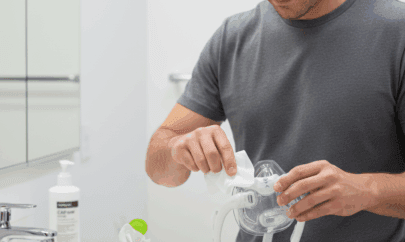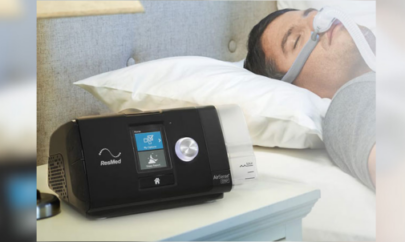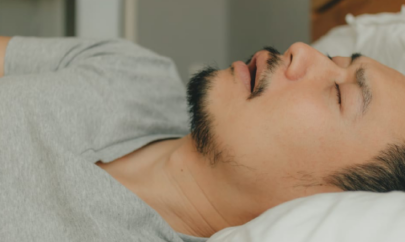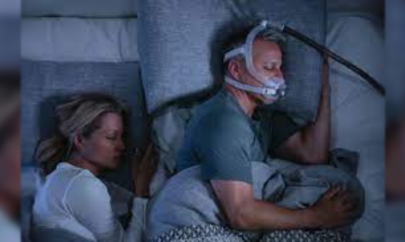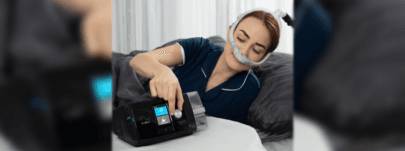
Optimizing Your Sleep: A Look at Auto PAP Settings Optimizing APAP
Obstructive sleep apnea, or OSA, is a medical condition that affects countless millions of people around the world. OSA must be diagnosed by a qualified sleep expert and cases range from mild to extremely severe.
How the problem is treated will depend on the severity of the problem and the underlying causes — but the most common form of treatment (and the most successful) is through the use of APAP (Automatic Positive Airway Pressure) devices.
APAP devices come in a range of sizes and can be simple or complicated. Some have very basic settings while others can be fine-tuned to the user’s individual requirements.
For many OSA sufferers the standard APAP settings are often all that are required for a successful outcome — but it can sometimes be beneficial to alter the settings slightly in order to optimize the effects of the device and achieve better results.
Obstructive Sleep Apnea and APAP
OSA causes the airway to constrict causing snoring or closing briefly during sleep as the neck and throat muscles relax. This can occur multiple times during the night and the loss of oxygen causes the brain to react by briefly waking the sufferer when it detects either flow limitation and/or the lack of oxygen.
The problem occurs because muscles in the throat relax too much and allow tissue to block the air passage. Treatments include using an automatic positive airway pressure device, an oral device which forces the lower jaw forward, or surgery which is quite a bit more invasive and expensive.
APAP devices work by delivering a varying stream of pressurized air to the mouth or nose (or both) and the pressure forces the throat to remain open thus allowing the sufferer to breathe normally.
The Benefits of APAP
APAP only provides higher pressures for 20% of the night when a patient is in REM sleep. For 80% of the night – during Non-REM sleep – the pressures are often between 5 and 10 cm H20. Lower APAP pressures make it easier to breathe throughout the night.
Higher pressures are required during REM sleep because the body loses muscle tone at that point – so there is no tone to keep the airway open. Because we are in a deeper stage of sleep during REM sleep, we don’t notice the higher pressures, so we can sleep comfortably with the higher setting.
When we leave REM sleep, the APAP adjusts settings for lower pressure Non-REM sleep.
The automatic APAP settings are designed to be used by most people. But sometimes the pressure settings are not ideal for an individual, and a different type of device like a bi-level or Auto Servo Ventilator is required. These devices are more sophisticated and used for patients with central sleep apnea or other respiratory diseases.
Correct Pressure Setting
Every sleep apnea sufferer is different and what range of pressure settings suits one does not necessarily suit all.
APAP devices are calibrated to be as effective as possible for as many people as possible but this does not mean that the range of APAP settings cannot be improved upon.
It is essential to achieve proper mask fitting and the APAP device is a smart device that increases and decreases pressures to achieve optimal therapy. Its algorithm is very precise and allows the user to not have to think about their pressure settings.
Sleep apnea sufferers using an APAP device should be aware of the correct range of pressure settings as this is crucial in treating the condition successfully. The air pressure should be just sufficient to keep the air passage open — but not cause discomfort or difficulty in breathing.
It is possible that another type of device is needed if one has difficulty complying with their APAP therapy. This is where a good APAP coach who communicates with your physician comes into place to guide you to the best therapy.
The measurement used in APAP devices is centimeters of water pressure, denoted as cmH2O. APAP device pressures can be adjusted to a range of 4 to 20 cmH2O.
The APAP automatically adjusts the positive pressure so that a person no longer snores or stops breathing. The device is very accurate in sensing abnormal breathing and providing the correct pressure to prevent abnormal events.
This is the starting pressure range but can be adjusted if necessary and most patients spend a majority of the night between settings from 6 to 14 cmH2O.
Crucially, APAP devices also record the number of times that breathing stops during one hour of sleep. This reading is called the apnea-hypopnea index (AHI) and is a key metric used by sleep experts to evaluate the severity of a patient’s obstructive sleep apnea.
AHI readings to determine the severity of sleep apnea from a diagnostic sleep study are interpreted as follows:
- 5 to 15 AHI – mild
- 15 to 30 AHI – moderate
- 30 AHI or over – severe
Note: It is not uncommon for a patient to have an AHI score below 5 who also experiences the same symptoms as those with a much higher AHI. These patients suffer from Upper Airway Resistance Syndrome (UARS) where flow limitation causes repeated arousals during sleep.
Insurance companies often resist paying for APAP therapy when someone’s AHI is below 5, however a clinical write up from your physician may help to receive reimbursement. Using the AHI readings, a sleep specialist can calculate the optimum pressure settings and type of device required to achieve the best results.
Most patients do well with a wide range of settings to their APAP device without requiring an overnight attended sleep study in a sleep laboratory. Any problems that arise from using the APAP can be resolved such as mask changes or minor changes to the pressure settings of the device.
Your APAP coach can work with your physician to assure that you remain compliant with the therapy. By using the AHI measurements to calculate the correct APAP pressure range, the aim is to reduce the AHI reading the next morning on your APAP device to five or under.
Time for Change
Many APAP users do not realize that the pressure settings can be changed and simply accept the standard APAP settings as being correct for all cases of sleep apnea. This, however, is far from being the case and adjustments may be required if the device is failing to treat the condition as it should.
Some possible indications that changes may be necessary are:
- Snoring is a problem
- Choking or gasping for breath during sleep
- Daytime drowsiness
- Leaking mask
- Bloating or gas
- Central sleep apnea or other respiratory diseases (such as COPD)
With the correct air pressure settings, snoring should no longer be an issue. A leaking mask may indicate problems with the mask itself which may need adjusting but in general patients do quite well with APAP since its technology automatically adjusts to any abnormal breathing occurrence.
In rare cases, a bloated feeling or attacks of gas are signs that the pressure range may need to be adjusted. Any changes in pressure settings need to be initiated by your doctor with an updated prescription.
Professional Adjustment
APAP devices, though robust, are delicate pieces of machinery and only a trained professional should carry out adjustments and repairs.
If the device does not seem to be operating effectively, the problem should be discussed with a sleep therapist and your physician who can decide whether the pressure needs adjusting or if the problem lies with the APAP device.
While it may be tempting to tweak the settings oneself this is not recommended, will void your warranty and will almost invariably lead to problems. Any adjustment to the standard APAP settings must ONLY be made by a qualified technician who will correctly calibrate the device for optimum effectiveness.
Source:



